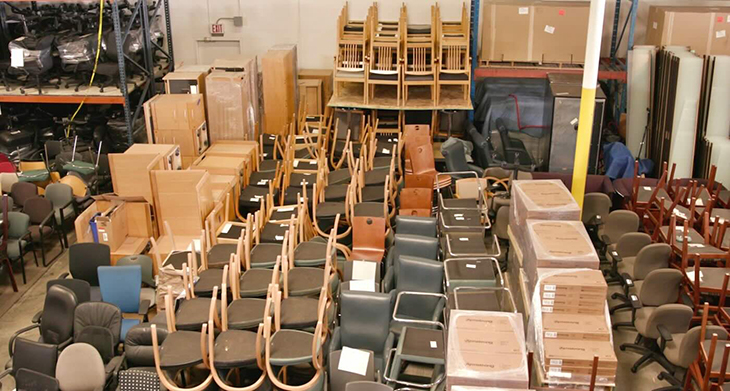

What began as one woman’s eye-opening moment on a job site has blossomed into a powerful movement for environmental and social good.
This year, ANEW, a nonprofit dedicated to repurposing corporate surplus and keeping furniture out of landfills, celebrates its 20th anniversary. Founded on Earth Day in 2005, ANEW has spent the last two decades proving that waste doesn’t have to be wasted — it can become a vital resource for communities in need.
From Industry Insider to Environmental Advocate
The idea for ANEW took shape in the mind of Rose Tourje, a seasoned professional in the commercial interior design industry. While enjoying a thriving career, Tourje experienced a defining moment that would change the trajectory of her life.
On one routine workday, she witnessed a shocking scene: office furniture being tossed directly out of windows of a building, crashing to the ground, where forklifts quickly moved the debris into dumpsters destined for landfills.
She couldn’t believe what she was seeing. “If this is happening with a large public company in Los Angeles, this must be happening everywhere,” she thought. The wastefulness was not only disheartening but also emblematic of a larger, systemic issue in the corporate world’s relationship with waste.
Unwilling to accept this as the norm, Tourje chose to leave behind her 30-year design career and forge a new path. From that vision, ANEW was born, an organization committed to giving office furniture and surplus a second life while serving communities and protecting the environment.
Pioneering ‘Surplus Stewardship’ and Circular Economies
From its Los Angeles headquarters, ANEW quickly established itself as a leader in sustainable resource management. The nonprofit’s mission revolves around extending the lifecycle of office furnishings through reuse, resale, repurposing, and recycling — with the added benefit of providing valuable resources to nonprofits, public agencies, and underserved communities.

Over the past 20 years, ANEW has worked on more than 435 projects, partnering with major corporations such as Toyota and Kaiser, as well as charitable organizations like Habitat for Humanity and Goodwill. These collaborations have helped companies meet their environmental and social responsibility targets while bringing much-needed furnishings and equipment to local organizations.
“We have enabled over 600 recipient organizations to allocate their financial resources toward sustaining and expanding their essential services, ultimately benefiting thousands of people in local communities,” ANEW proudly shared in a press release marking their 20-year milestone.
Measurable Environmental and Social Impact
The environmental footprint of ANEW’s work is both significant and measurable. Since 2015 alone, the organization has diverted more than 8,000 tons of waste from U.S. landfills and prevented over 6,207 tons of greenhouse gases from entering the atmosphere. These numbers illustrate the potential for real, tangible benefits when companies choose to rethink how they dispose of their surplus.
ANEW’s motto, “doing what’s right with what’s left,” perfectly captures the essence of their mission. Beyond waste diversion, the organization is deeply committed to education and awareness. Through free workshops, presentations, and detailed case studies, they promote the concept of ‘Surplus Stewardship’ — a philosophy encouraging businesses to see their excess resources as opportunities rather than refuse.

Educating for a More Sustainable Future
In keeping with its leadership role, ANEW has also expanded its reach into professional education. Last year, the organization launched the first of two accredited Continuing Education Unit (CEU) courses designed to help architecture and design professionals integrate principles of circularity into their work. These courses aim to empower industry leaders to make more sustainable decisions, support local economies, and better manage resources in their projects.
ANEW’s independently audited projects consistently deliver measurable outcomes, highlighting their positive environmental and social impacts. It’s a model of how grassroots initiatives, when nurtured with dedication and vision, can grow into transformative forces for good — one desk, chair, and conference table at a time.
What are your thoughts? Please comment below and share this news!
True Activist / Report a typo







